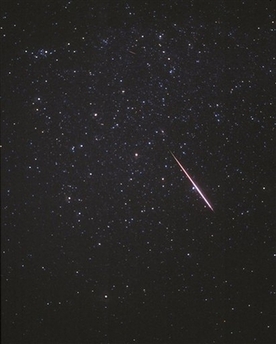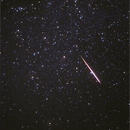Meteor shower peaks this weekend
Associated Press
August 9, 2007
LOS ANGELES - Summer's annual meteor shower promises to put on a dazzling show when it peaks this weekend - provided you're far from city lights. With no moon in sight to interfere with the Perseid meteor shower, skygazers can expect to spot streaking fireballs late Sunday into dawn Monday regardless of time zone. Astronomers estimate as many as 60 meteors per hour could flit across the sky at the shower's peak.
This year's sky show comes with an added bonus: Mars will be visible as a bright red dot in the northeastern sky.
"We have front-row seats this year," said Kelly Beatty, executive editor of Sky & Telescope magazine.
Last year's Perseid shower was somewhat of a dud because the moon's glare washed out many of the faint meteors. This weekend's meteor shower coincides with a new moon, which means the skies will be dark and perfect for viewing meteors.
Experts offer some tips to get the most out of nature's fireworks: Since Perseid meteors can be seen from any direction in the sky, viewers should pick out a dark patch of sky free of light pollution and wait for the meteors to appear.
Dim meteors appear as a momentary flash of light while the brighter ones leave a glowing streak. The number of Perseids zipping across the sky should increase steadily through the night, peaking just before sunrise. Although the peak occurs this weekend, the Perseids are visible for several nights after that.
Unlike other celestial sightings that require a telescope or binoculars, the best way to watch a meteor shower is with the naked eye.
The Perseids are perhaps the most beloved of all meteor showers because of their predictability. The August shower gets its name from the constellation Perseus because the meteors appear to originate there.
The annual Perseid shower occurs when the Earth's orbit crosses the path of debris thrown off by Comet Swift-Tuttle. As the cosmic junk - many the size of a grain of sand - enters the atmosphere, it burns up in a flash, appearing as "shooting stars" across the sky.
In the past, the Perseid showers have produced such spectacular displays that people swamped radio stations with reports of a mysterious light in the sky.





 Share your thoughts in the Forum
Share your thoughts in the Forum